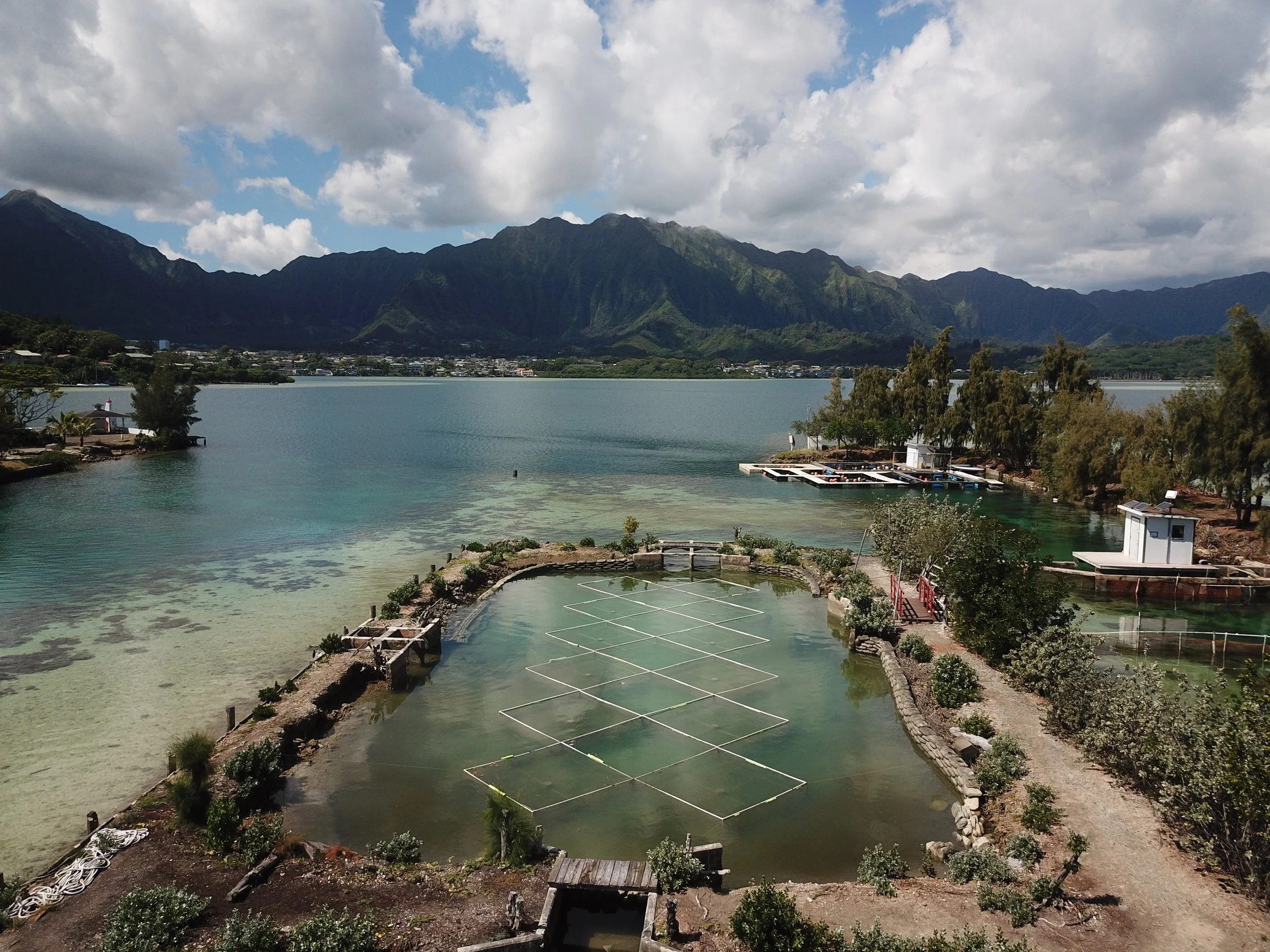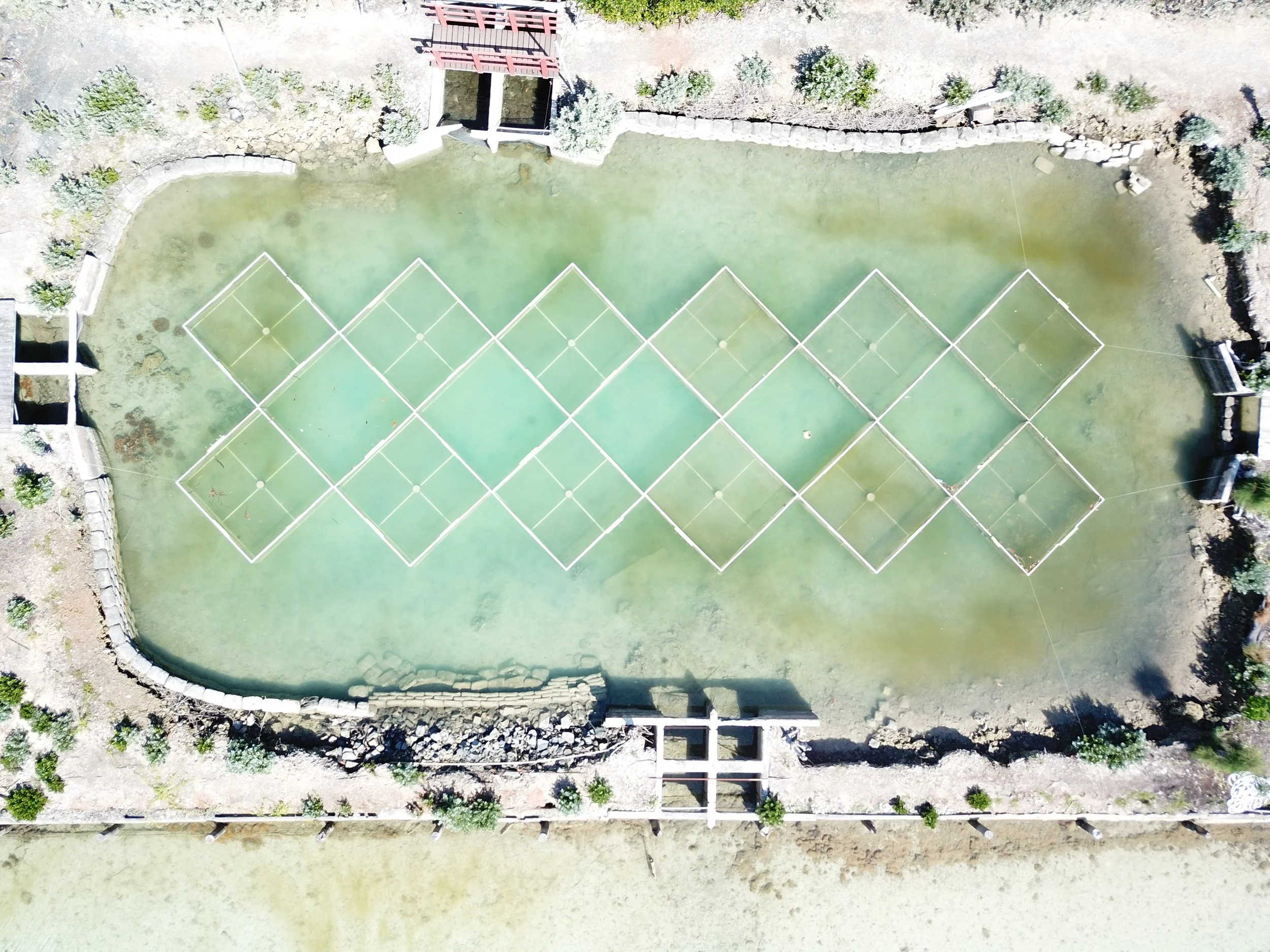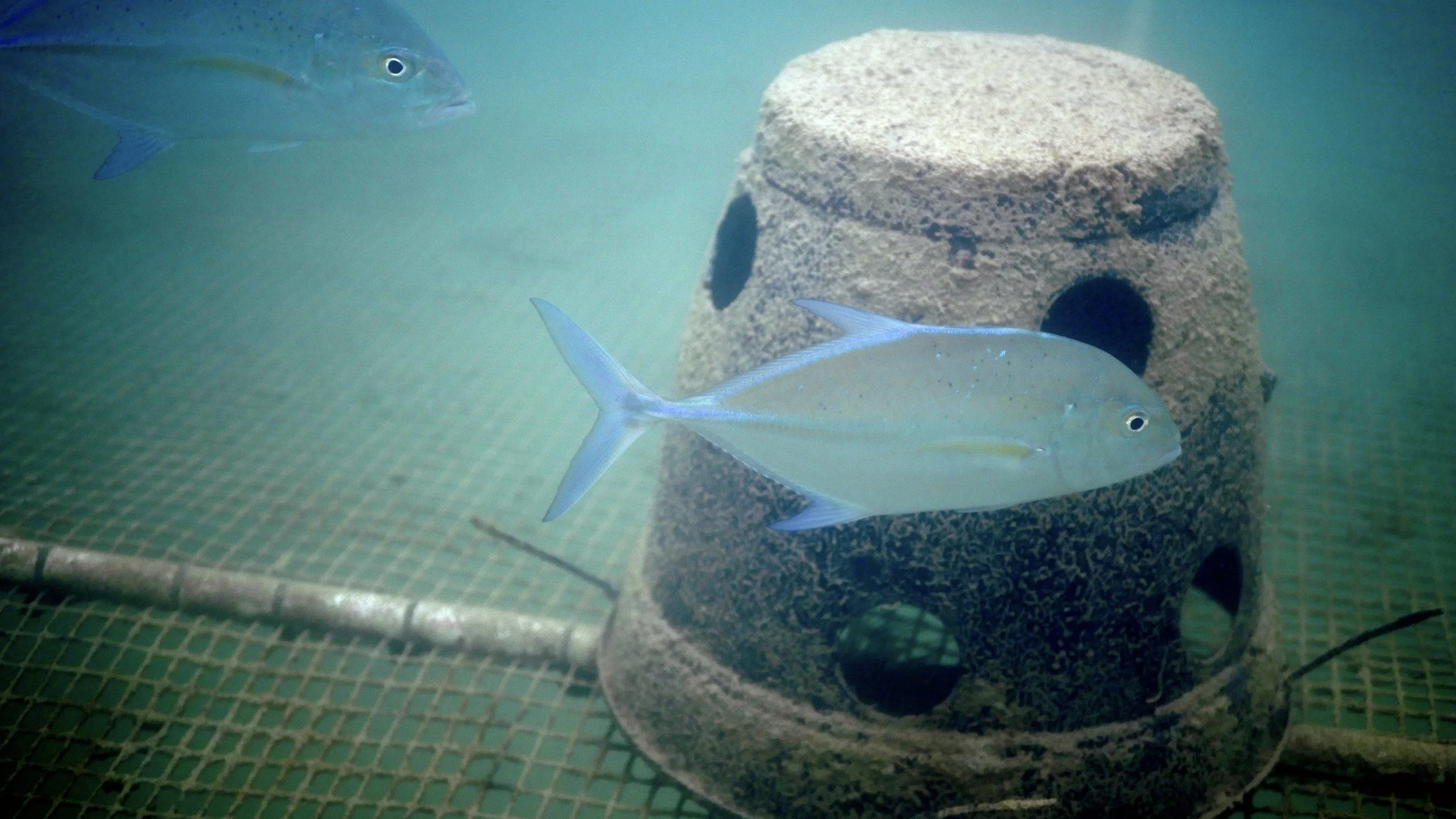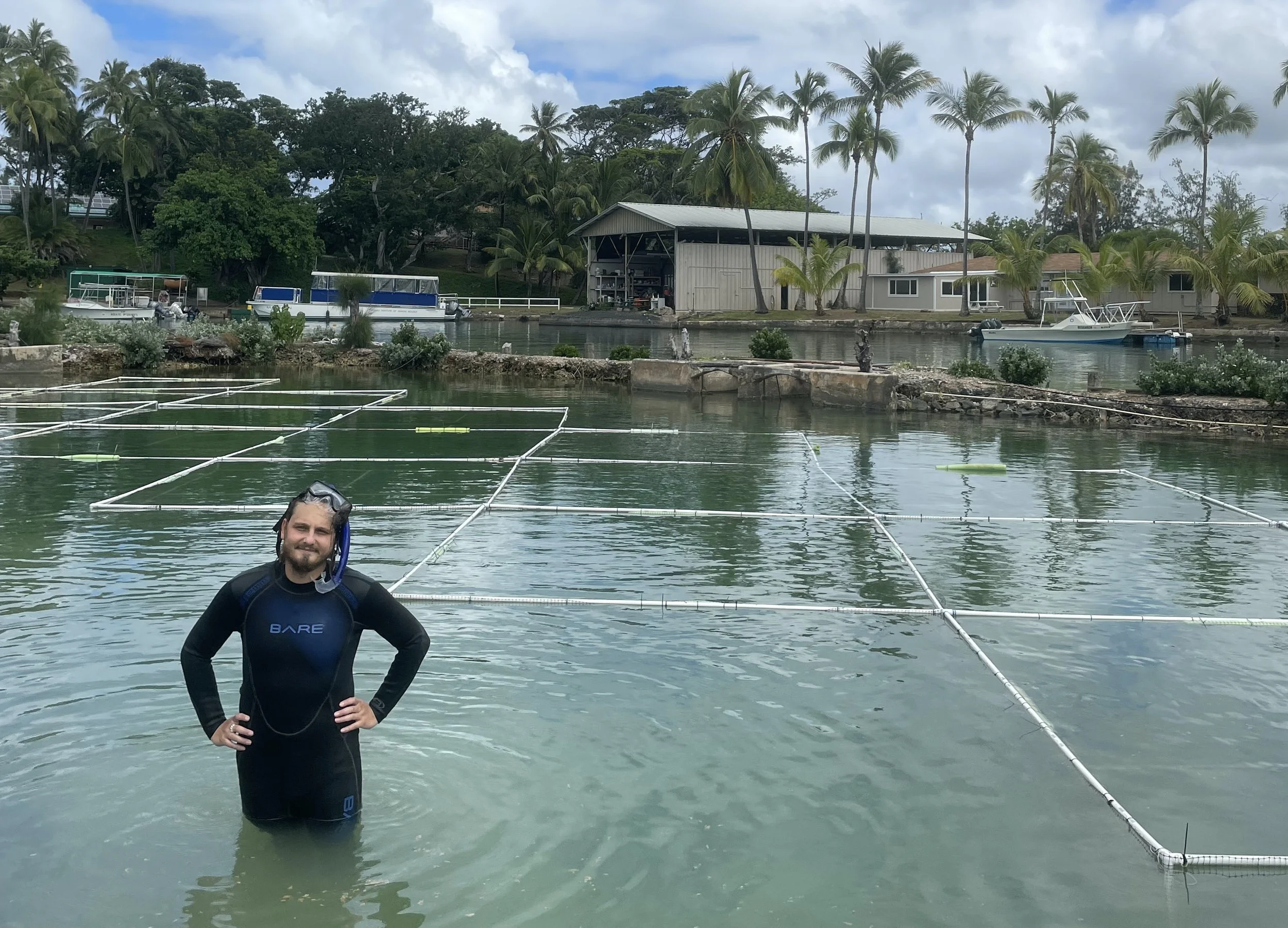Inside Look At The Madin Lab Mesocosms
Aerial Photo: Lab Manager and Drone Pilot, Aviv Suan
When Zack Rago began his PhD two years ago he was tasked with designing a system that would allow us to explore how coral reef halos are related to predator-herbivore interactions. One of the challenges was to find balance between the control one has with lab aquaria and the more realistic conditions of working in the field. After a bit of trial and error, we were able to build 12 floating mesocosms. Each mesocosm, or enclosure, has a volume of just over 1,100 gallons and all 12 are located inside of one of the old fish pens located here at Moku o Loe. This design allows us to have full control over what happens in each individual system while also having them all in the same body of water with identical environmental parameters.
Aerial photograph taken by Lab Manager and Drone Pilot, Aviv Suan, showing the 12 mesocosms located at the Hawaii Institute of Marine Biology.
Inside each mesocosm you will find a central structure that has been designed to only allow small herbivores inside and represents the protection herbivores would have on small patch reefs. We then have the ability to clip palatable strands of algae at fixed points radiating out from center. This allows us to measure how much, as well as where, herbivores are choosing to graze. I’m sure you’re wondering by now why we would be interested in throwing a bunch of herbivores into enclosures and seeing where they eat but that’s only 50% of the story. We are also introducing predators inside each system and simply their presence is able to influence the herbivores decision making on where they’re willing to graze. Currently we use Acanthurus triostegus, the convict tang or manini, as our herbivores and Caranx melampygus, the bluefin trevally or omilu, as our predators. The focus of our experiments is to look at how different densities of herbivores and predators influence how the herbivores graze over time and space.
Photograph taken by PhD Student Zack Rago shows two omilu circling around the central structure inside one of the mesocosms.
In our first experiment we placed the same number of herbivores in each system but varied the number of predators present. We then place algae at different distances away from our central structure. During the experiment we are able to measure how much algae is being eaten across space as well as visualize whether halo-like patterns are forming around our protective structures. So far our data is showing some really exciting patterns and the mesocosm design seems to have been a huge success! Stay tuned for more updates on what we find out about coral reef halos down in the Madin Lab Mesocosms!
Phd Student Zack Rago working inside the fish pen where the Madin Lab Mesocosms are located.



